The shortest Newbery with so much emphasis on the illustrations, Elizabeth Coatsworth’s 1931 The Cat Who Went to Heaven, almost seems like a long picture book (something about the length of My Father’s Dragon or The Little Prince). It tells the story of a poor artist whose housekeeper brings him a lucky cat, Good Fortune, instead of dinner one day. The artist’s fortune changes and a local monastery employs him to paint a famous Buddhist scene: the death of Buddha. The artist paints many animals who come to pay homage to Buddha, each having aided Buddha or been Buddha himself in some form…except there is no cat. But in an act of daring defiance, the artist, so moved by his own cat, paints the cat into the scene sending the cat into such ecstasy, that the cat dies.
What I liked. The story was short enough with just enough repetition to make it feel like a lyrical children’s story, but not too long or repetitive that it lost that vision. I liked the artist’s movement from apathy and anger to devoted reflection and creation to integrity and boldness by the end of the story.
What was interesting. I was so surprised that this is the 3rd Newbery in which Buddhism plays an important role. (Also, The Story of Mankind, chapter 42,and Gay-Neck the Pigeon). I had sort of thought that American’s interest in Buddhist stories and teachings was something that started in the 1960s. But it turns out that even apart from the mid-19th century Asian immigration, by the 1890s the parliament of world religions, held in conjunction with the Chicago World’s Fair, was gathering influential American Buddhist writers, and by the 1930s the Buddhist society of America was formed. Coatsworth’s interest came out of extensive world traveling and time spent in Buddhist monasteries (I would imagine that since that semi-autobiographical narrator of Gay-Neck also spent time in similar monasteries, that perhaps the author Dhan Gopal Mukerji did as well.)
What were some limitations. I found the list of animals, and their stories of either helping Buddha or being a form of Buddha fascinating, but they didn’t have much to do with each other or the story as a whole, and by the end I found myself, like the cat, getting a little impatient and disappointed that another animal was being added to the menagerie. Also the cat’s death was really abrupt (I know it’s in the title!) but I wasn’t ready for the cat to keel over from joy. I had gotten a little attached to that cat.
Why I think it’s a Newbery. It is very different in length from the other Newberies, and it seems more like a slightly longer folk tale than a standalone tale. But it is a pretty book with good rhythm, and it has an exotic setting centering on animals, which are two things that the Newberies of the 1920s and 30s have in common.
Similarity to other Newbery winners. A significant portion of the book retells the story of Prince Siddhartha who becomes the Buddha, which is also told in similar detail in chapter 42 of The Story of ManKind. The style of The Cat Who Went to Heaven also reminded me a lot of the folk tales from Tales from the Silver Lands and Shen of the Sea.
What it teaches me as a writer. The lesson from The Cat Who Went to Heaven for me is the power of brevity. So many of the other Newberies have many strong parts, but they get lost in the details as the book goes along. The tightness of The Cat Who Went to Heaven allows Coatsworth to really accomplish what she wants to in the development of the artist and the cat’s relationship.
Have you read The Cat Who Went to Heaven? What are your favorite long picture books?
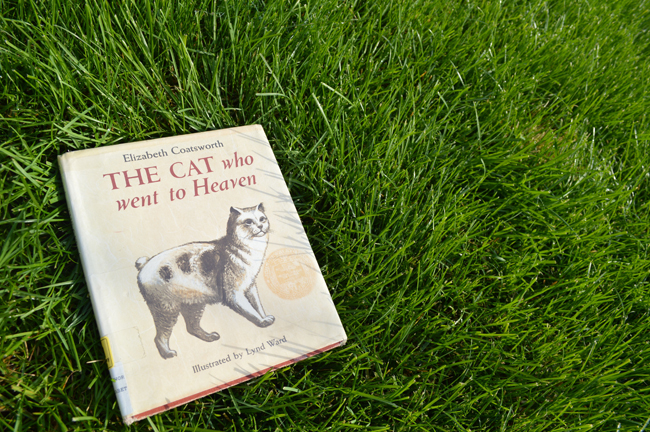

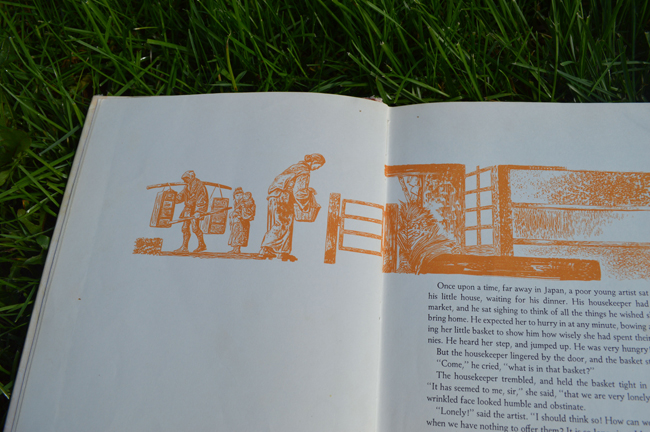
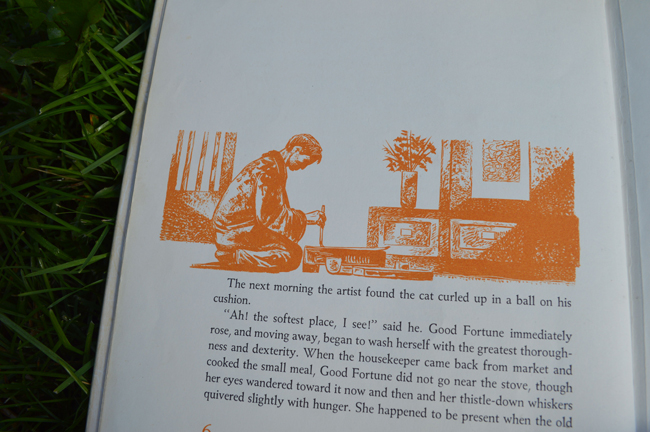
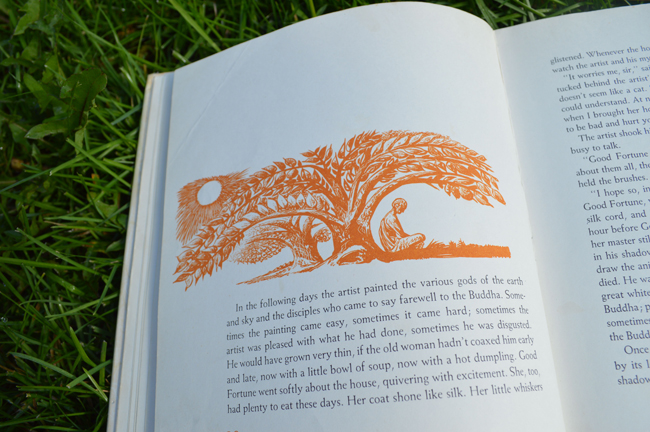
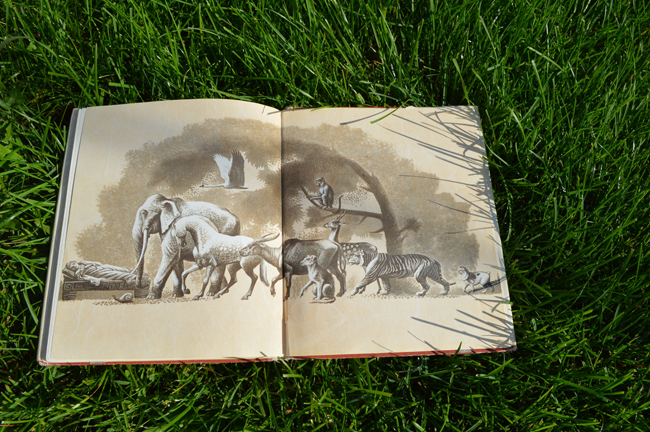
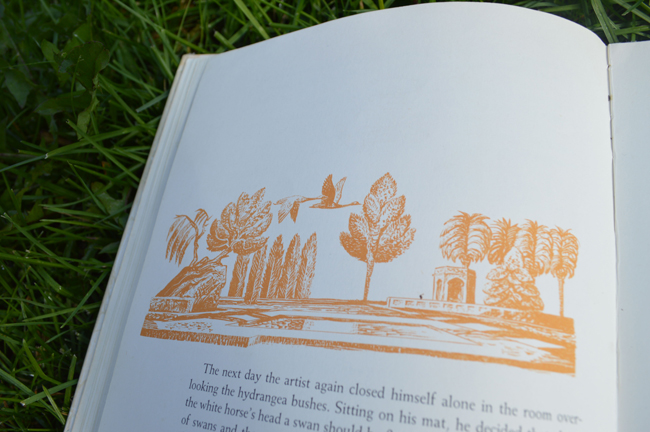

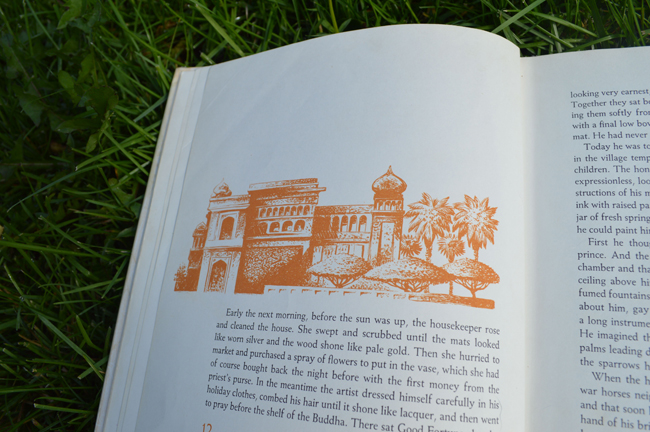
Though I haven’t commented here of late, I want you to know how impressed I am you’re doing this. Thanks for these posts!
I used to do a project with my students called Where in the World Are We Reading? — something I used one way when I only taught English and another when I only taught social studies. With English, I’d have the kids read at least one book about a different continent each term. I remember a lot of kiddos read this one for their Asia book.
Thanks Caroline! I am not sure I knew really how big this project was going to be when I started, or how different the content of award winning 1920s children’s literature would be. But then again, sometimes I get to use that highly cultivated graduate school skill — how to finish a book when you really rather do something else. (And that puts it into perspective, no Newbery book is really that long or that boring compared to some grad school books!!) I think they are getting better though. CAT WHO WENT TO HEAVEN, is pretty charming, I could see your students choosing it. One other benefit of the series is that I visited a lot of my relatives who don’t really have a context for what a “blog is,” but they did get the Newbery project, and shared some memories about ones they liked. I’ve been surprised that lot of people have connections with them. Hope you’re enjoying your July blogging break!